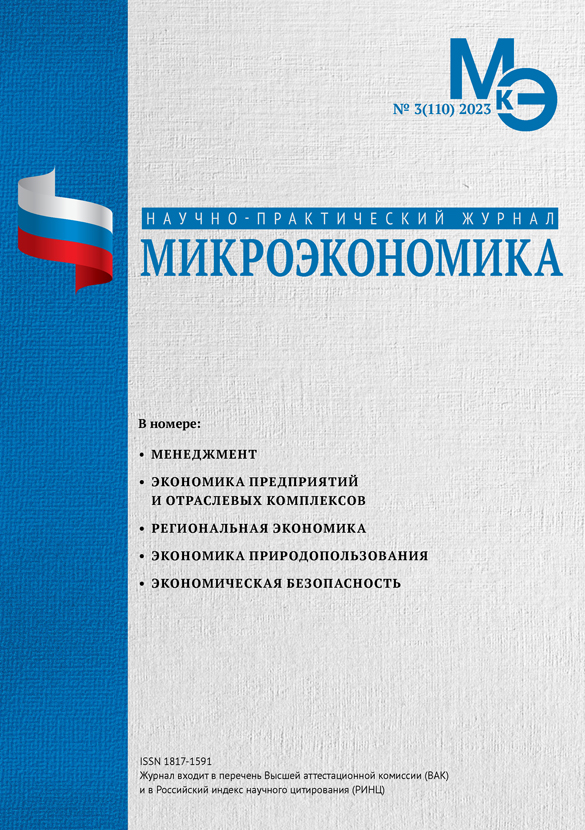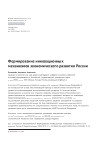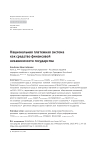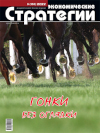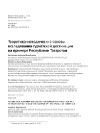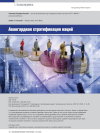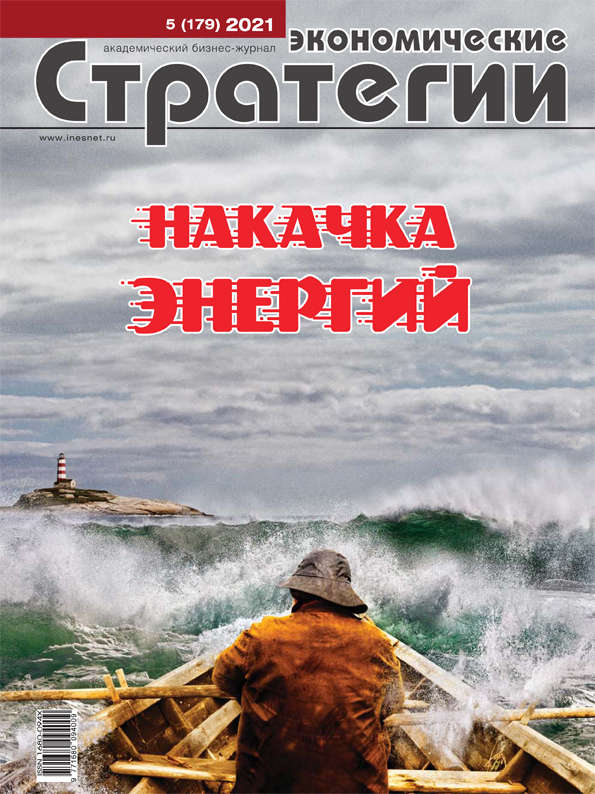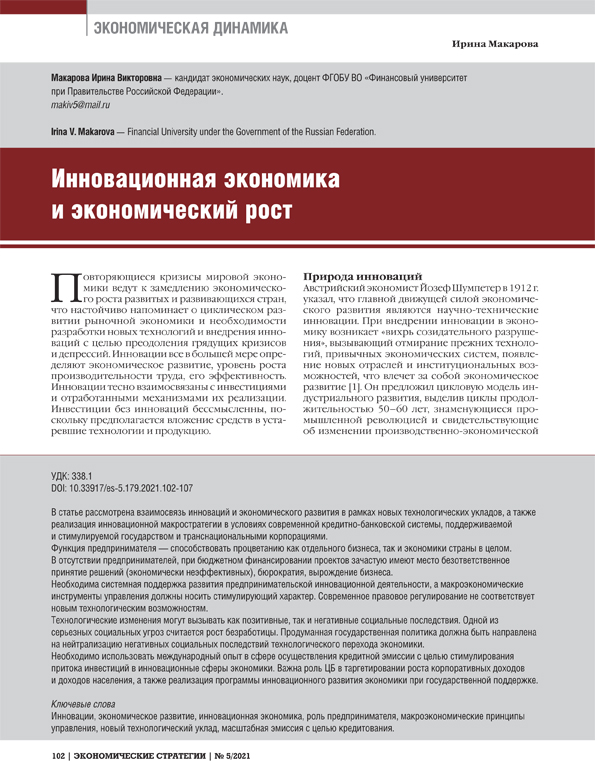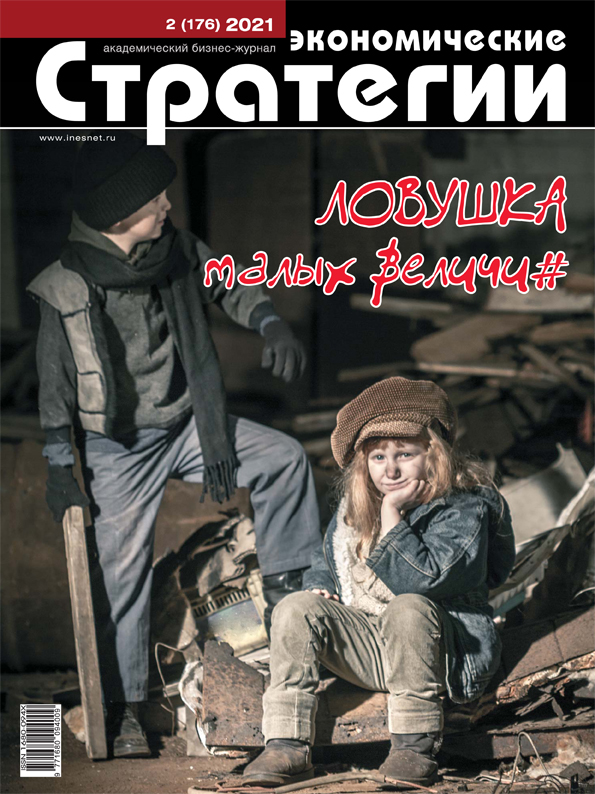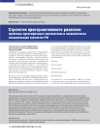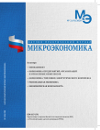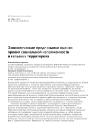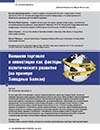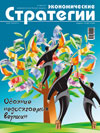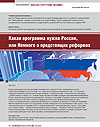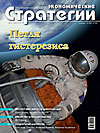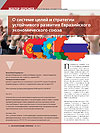Formation of innovative mechanisms of economic development of Russia
DOI: 10.33917/mic-5.112.2023.5-15
In modern conditions, the economic development of the country should be based on an innovative basis, ensuring the transition to a new technical and technological level and import substitution of high-tech products. The article considers the organizational and economic mechanism for improving the technical and technological level of production of high-quality products and proposes an algorithm for its implementation, which provides for analysis and prompt decision-making in case of rejection or failure to achieve the decisions required at the moment, measures for the creation and release of innovative products. On the basis of the proposed mechanism, it is possible to take into account the directions of the organizational-institutional and technical-technological plan, which will increase the growth rates of industrial production and GDP of the Russian Federation.
References:
1. Federal Law No. 127-FZ of August 23, 1996 «On Science and State Scientific and Technical Policy». URL: https://www.consultant.ru/document/cons_doc_LAW_11507/
2. Federal Law No. 39-FZ of February 25, 1999 «On Investment Activities in the Russian Federation Carried Out in the Form of Capital Investments». URL: https://www.consultant.ru/document/cons_doc_LAW_22142/
3. Federal Law No. 184-FZ of December 27, 2002 «On Technical Regulation». URL: // https://www.consultant.ru/document/cons_doc_LAW_40241/
4. Federal Law No. 156-FZ of November 29, 2001 «On Investment Funds». URL: https://www.consultant.ru/document/cons_doc_LAW_34237/
5. Forecast of scientific and technological development of the Russian Federation for the period up to 2030 (approved By the Government of the Russian Federation on January 3, 2014). URL: https://www.consultant.ru/document/cons_doc_LAW_157978/
6. Shepelev G.V. On the priorities of scientific and technological development. Management of science: theory and practice. 2020;2(3):16-36. (In Russ.).
7. Ostapyuk S.F., Fetisov V.P., Ostapyuk I.S. Approaches to choosing priorities in the scientific and technical sphere. Microeconomics. 2023;1:5-22.
https:doi.org/10.33917/mic-1.108.2023.5-22. (In Russ.).
8. Federal Law No. 70-FZ of April 7, 1999 «On the Status of the Science City of the Russian Federation». RL: https://www.consultant.ru/document/cons_doc_LAW_22630/
9. Federal Law No. 116-FZ of July 22, 2005 «On Special Economic Zones in the Russian Federation». URL: https://www.consultant.ru/document/cons_doc_LAW_54599/
10. Federal Law No. 139-FZ of July 19, 2007 «On the Russian Nanotechnology Corporation». URL: https://www.consultant.ru/document/cons_doc_LAW_69932/
11. Federal Law No. 244-FZ of September 28, 2010 «On the Skolkovo Innovation Center». URL: https://www.consultant.ru/document/cons_doc_LAW_105168/
12. Federal Law No. 216-FZ of July 29, 2017 (as amended on 12/28/2022) «On Innovative Scientific and Technological Centers and on Amendments to Certain Legislative Acts of the Russian Federation». URL: https://www.consultant.ru/document/cons_doc_LAW_221172/
13. The Strategy of Innovative Development of the Russian Federation (approved by the Decree of the Government of the Russian Federation No. 2227-r dated December 8, 2011). URL: https://www.consultant.ru/document/cons_doc_LAW_123444/
14. Decree of the President of the Russian Federation No. 204 dated May 7, 2018 «On National goals and strategic objectives of the Development of the Russian Federation for the period up to 2024». URL: https://www.consultant.ru/document/cons_doc_LAW_297432/
15. The Strategy of Scientific and Technological Development of the Russian Federation (approved by Decree of the President of the Russian Federation No. 642 of December 1, 2016). URL: https://www.consultant.ru/document/cons_doc_LAW_207967/
16. Resolution of the Government of the Russian Federation No. 1172 of November 16, 2012 «On the Powers of Federal executive authorities in the field of state support of innovation activities». URL: https://www.consultant.ru/document/cons_doc_LAW_137901/
17. Decree of the Government of the Russian Federation No. 773 dated June 15, 2019 «On criteria for Classifying goods, works, services as Innovative products and (or) High-tech products» (together with «Requirements for Criteria for Classifying goods, works, services as innovative products and (or) high-tech products, as well as the procedure for their establishment»). URL: https://www.consultant.ru/document/cons_doc_LAW_326971/
18. Resolution of the Government of the Russian Federation No. 2204 of December 22, 2020 «On Certain Issues of Implementing State Support for Innovation Activities, including through Venture and (or) Direct Financing of Innovative Projects, and Invalidation of the Act of the Government of the Russian Federation and a Separate Provision of the Act of the Government of the Russian Federation». URL: https://www.consultant.ru/document/cons_doc_LAW_372290/
19. Federal Law No. 258-FZ of July 31, 2020 «On Experimental Legal Regimes in the Field of Digital innovations in the Russian Federation». URL: https://www.consultant.ru/document/cons_doc_LAW_358738/
20. Decree of the President of the Russian Federation No. 121 dated March 16, 2022 «On measures to ensure socio-economic stability and protection of the population in the Russian Federation». URL: http://www.kremlin.ru/acts/bank/47651
21. Decree of the President of the Russian Federation No. 126 dated March 18, 2022 (ed. dated 11/23/2022) «On additional temporary economic measures to ensure the financial stability of the Russian Federation in the field of currency regulation». URL: https://www.consultant.ru/document/cons_doc_LAW_411944/
22. Federal Law No. 30-FZ of March 04, 2022 «On Amendments to the Federal Law “On Measures of Influence on Persons Involved in Violations of Fundamental Human Rights and Freedoms, Rights and Freedoms of Citizens of the Russian Federation”». URL: https://www.consultant.ru/document/cons_doc_LAW_139994/
23. Resolution of the Government of the Russian Federation No. 337 of March 10, 2022 «On Approval of the List of Industries in Which the Borrower Operates, Specified in Part 1 of Article 7 of the Federal Law “On Amendments to the Federal Law “On the Central Bank of the Russian Federation (Bank of Russia)” and Certain Legislative Acts of the Russian Federation regarding the Specifics amendments to the terms of the loan agreement, the loan agreement” and on the invalidation of certain provisions of certain acts of the Government of the Russian Federation». URL: http://publication.pravo.gov.ru/document/0001202203110015?index=2
24. Resolution of the Government of the Russian Federation No. 296 dated March 06, 2022 «On Amendments to the Rules for the Selection of Organizations Included in the Sectoral Lists of System-forming Organizations of the Russian Economy». URL: http://publication.pravo.gov.ru›Document…0001202203070003
25. Federal Law No. 46-FZ of March 08, 2022 «On Amendments to Certain Legislative Acts of the Russian Federation». URL: http://publication.pravo.gov.ru›Document…0001202203080001
26. Decree of the President of the Russian Federation No. 172 dated March 31, 2022 (ed. dated 12/30/2022) «On a special procedure for the fulfillment by foreign buyers of obligations to Russian natural gas suppliers». URL: https://www.consultant.ru/document/cons_doc_LAW_413296/
27. Decree of the President of the Russian Federation No. 254 dated May 04, 2022 «On the temporary Procedure for fulfilling financial obligations in the field of corporate relations to Certain foreign creditors». URL: https://www.consultant.ru/document/cons_doc_LAW_416361/
28. Decree of the Government of the Russian Federation No. 430-r dated March 05, 2022 (ed. dated 10/29/2022) «On Approval of the List of Foreign States and Territories Committing Unfriendly Acts against the Russian Federation, Russian Legal Entities and Individuals». URL: https://www.consultant.ru/document/cons_doc_LAW_411064 /
29. Decree of the President of the Russian Federation No. 95 dated May 05, 2022. «On the temporary procedure for fulfilling obligations to certain foreign creditors». URL: http://publication.pravo.gov.ru/D ocument/View/00012022030500 6
30. Romashova Yu.A. Ways of cost reduction at enterprises in the oil and gas industry / Yu. A. Romashova, Yu. E. Akhmetshina, P. Yu. Companeets; scientific hand. O. V. Pozharnitskaya // Problems of geology and subsoil development: proceedings of the XX International Symposium named after Academician M. A. Usov students and young scientists dedicated to the 120th anniversary of the Tomsk Polytechnic University Foundation Day, Tomsk, April 4-8, 2016: at 2 t. Tomsk: TPU Publishing House, 2016. Vol. 2. pp. 1080-1081. URL: https://earchive.tpu.ru/handle/11683/32218
31. Pelmeneva A.A. Assessment of the impact of the quality of oil and gas equipment on the economic efficiency of the company. Quality management in the oil and gas complex (UKANG). 2013;3:23-26. (In Russ.).
32. Pelmeneva A.A., Fedorov S.A. Improving approaches to the evaluation of scientific and technical solutions in the oil and gas complex of the Russian Federation. Problems of economics and management of the oil and gas complex. VNIIOENG. 2017;12:45-53. (In Russ.).
33. Shabanova D.N., Nelina V.V. Modern trends in project quality management in the oil and gas industry. Problems of economics and management of the oil and gas complex. 2022;(210):18-24. DOI:10.33285/1999-6942-2022-6(210)-18-24.
34. Makarova E.D. Innovative projects of global transformation energy spaces. Problems of economics and management of the oil and gas complex. 2022;6 (210):12-17. DOI:10.33285/1999-6942-2022-6(210)-12-17.


